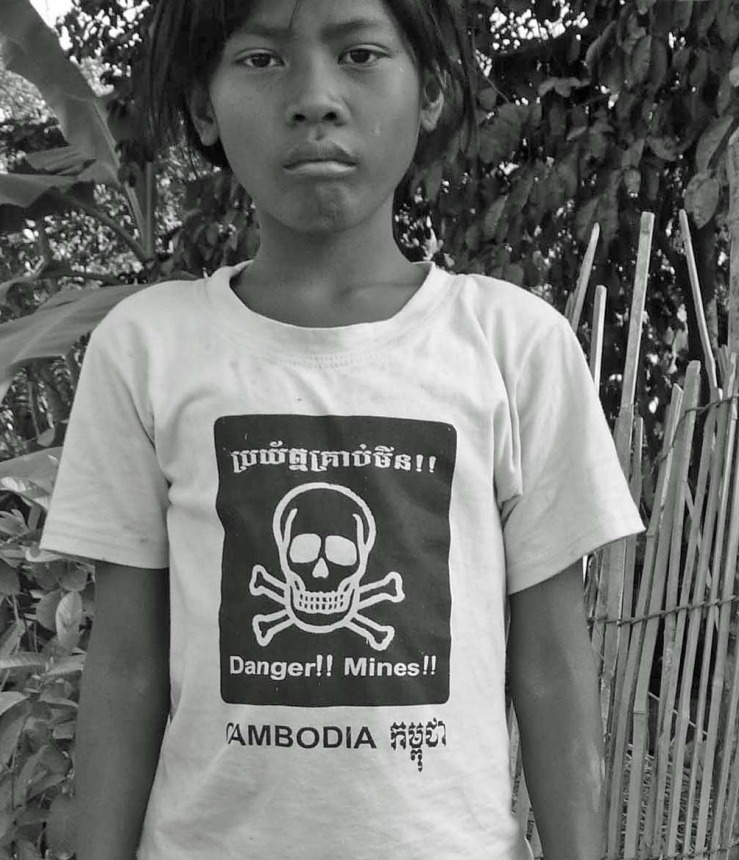Danger! Mines!
One morning June traveled along another dusty red road and stopped at a village shop selling the usual bags of soap and bananas. A young girl wore a t-shirt. It had a picture of a skull and bones.
It said:
Danger! MINES!
She wore a permanent tear on her left cheek. She was not smiling.
She said, here I am. I communicate my reality to the world. Do you like my shirt?
Can you read words or do you need a picture? How about a picture of a picture?
I don’t know how to read so I like to look at pictures. My country has 14 million people and maybe 6-10 million land mines. Adults say there are 40,000 amputees in my country. Many more have died because we don't have decent medical facilities.
Mines are cheap. A mine costs $3.00 to put in the ground and $300 - $1,000 to take out of the ground.
I'm really good at numbers. Talk to me before you leave trails to explore the forest. It's beautiful and quiet. I know all the secret places.
I showed my picture to a Cambodian man and he didn't like it. They call this denial. He said it gave him nightmares. He’s seen too much horror and death in one life. So it goes.
My village is my world. Where do you live?
*
Reports from the killing fields indicate there are 110 million land mines buried in 45 countries.
It will cost $33 billion to remove them and take 1,100 years. Governments spend $200-$300 million a year to detect and remove 10,000 mines a year.
Cambodia, Laos, Angola, Iraq and Afghanistan are among the most heavily mined countries in the world.


 Share Article
Share Article